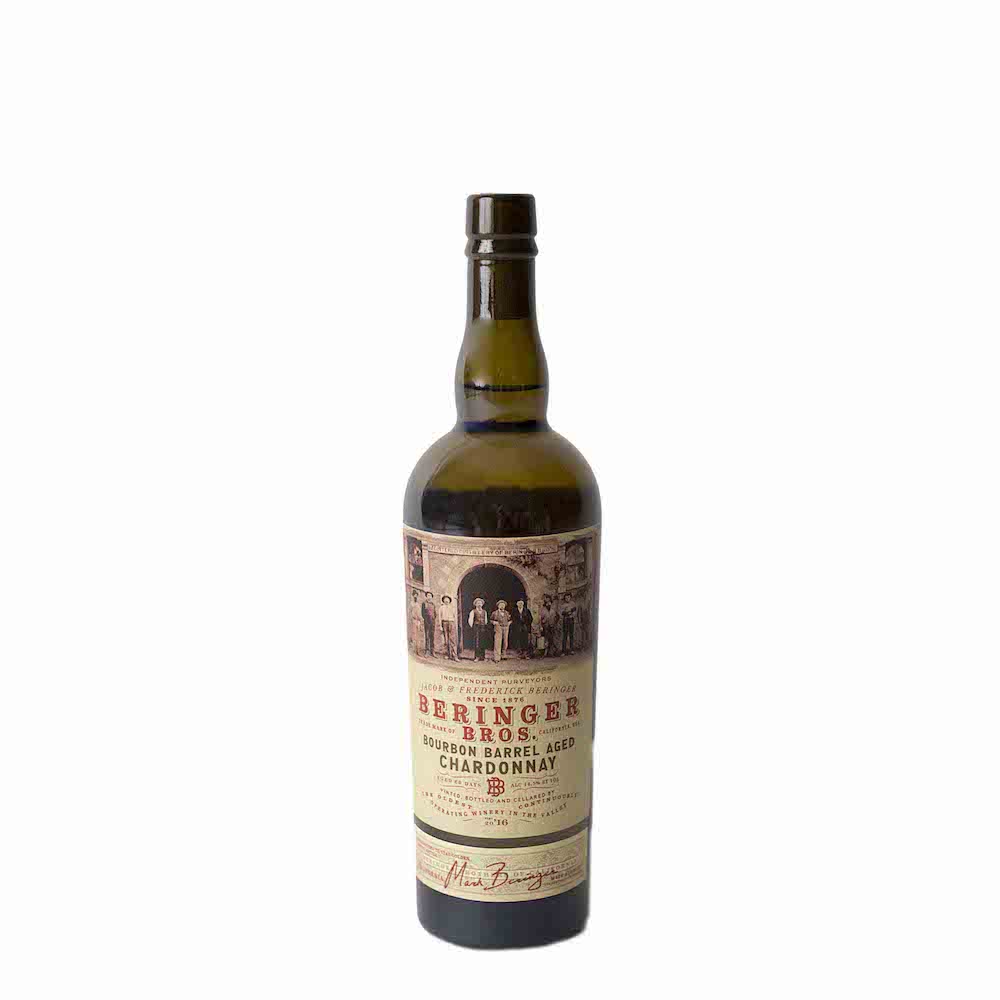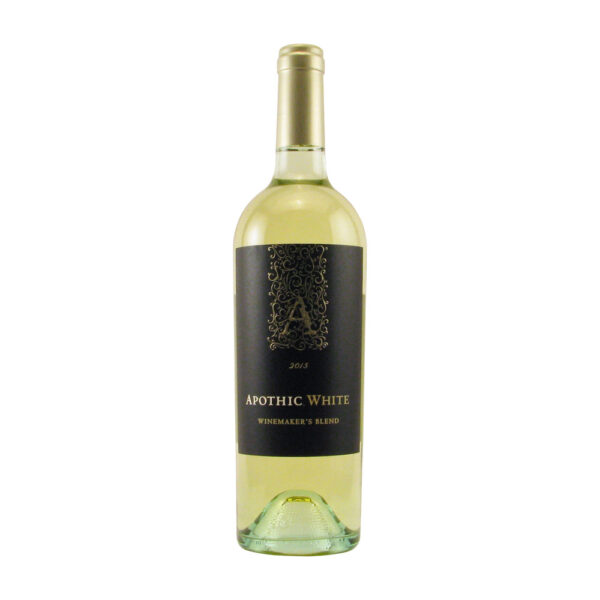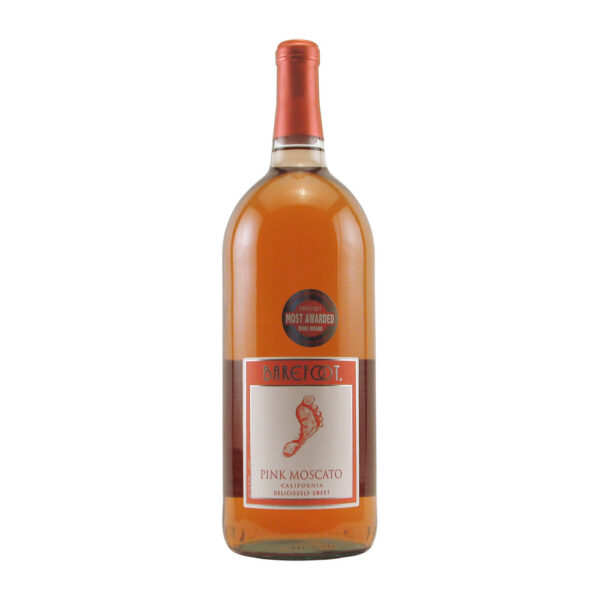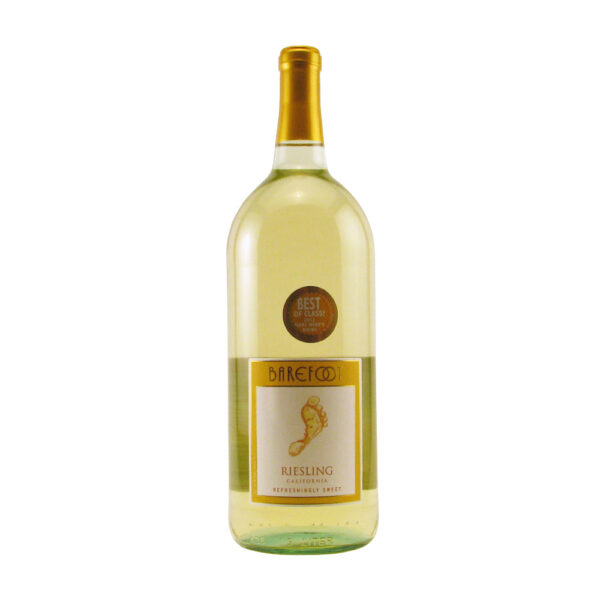Description
Beringer Bros. Bourbon Barrel Aged Chardonnay
TASTING NOTES
This wine showcases a bouquet of ripe apricot, vanilla beam, and buttered toast. Creamy and mouth-coating, the palate evokes apple pie and vanilla ice cream with caramel coming through on the lingering finish.
WINEMAKING NOTES
Beringer Bros. Chardonnay is picked at the peak of flavor development from top sites across California and fermented in temperature-controlled stainless steel tanks with 25% malolactic fermentation. 20% of the wine is aged for 60 days in second-pass charred American Oak barriques which previously held Bourbon.
Beringer Bros. Bourbon Barrel Aged Chardonnay Notes To Your Senses:
- TASTE: Golden apples, toasted almonds and a buttery finish
- AROMA: Ripe apricot, vanilla beam, and buttered toast
- APPEARANCE: Golden yellow
- ABV: 14.5%
- PAIRING: Seafood dishes and/or chicken
Chardonnay:
A green grape used to make white wines. Originating from Eastern France, in Burgundy, it now grows all around the world. In Italy, it’s used to make sparkling wines, including Champagne. Chardonnay is an easy entry into the international wine market due to its malleable ability to adapt to a variety of conditions. Modern DNA fingerprinting from the University of California suggest Chardonnay is a cross between Pinot noir and Gouasis blanc grape varieties.
Chardonnay grapes are very neutral, but many flavors are associated with where it’s derived from. For example, the taste is influenced by terroir and oak. Many different styles arise, such as lean, crispy minerals to oak and tropical fruit flavors.
In California cool climates, it tends to be a medium to light-bodied wine with more acidity and flavors of green plum, apple, and pear. In warmer locations, like parts of Australia and New Zealand, fig and tropical fruits like banana and mango are more pronounced.
Chardonnay
- medium- to full-bodied wines
- apple, fig, melon,pair, pineapple or peach notes
- If it’s made in an oaked style, spice, honey, or butter flavors arise
- The very best varieties made are rich, complex and age well
- Burgundian style is the most balanced among varieties of Chardonnay and less fruity than California styles
- If you prefer the unoaked variety, tasting descriptions should include lean, mineral, fresh, white flowers and citrus blossom
White Wine:
White wine is made without the skin of the grape and produced through a method called alcohol fermentation. Also, the majority of white wines are lighter and have a crisper, more citrusy flavor compared to red.
It’s best to serve white wine in glasses with a larger bowl so that bold aromas and flavors emerge as they mingle with oxygen in the air. Many wine glass manufacturers have added a hint of green or blue feet to wine glasses as it flatters white wine and helps emphasize the separation between the glass and wine. Traditionally speaking, white wines are served before reds, while younger wines should be served before older vintages.
In addition, due to white wine’s aroma, acidity and ability to soften meat and deglaze cooking juices, white wines are often used in cooking. Sweet wine goes well with sweet and savory dishes to mitigate the heavy sugar and stimulate the fruitiness.
If you’re a sparkling wine lover at mealtime, you’re in luck, it can be taken any time during the meal because of its diversity. By choosing a sparkling wine, it allows the retention of the same wine from the beginning to the end of the meal.
Making it a must have in any household!
Master Sommelier Little Known, Big Facts:
- The color of wine depends on the fermentation extracts using skin, like Red wine as compared to white wine, leaving the skin behind
- The oldest bottle of wine dates back to A.D. 325; it was found in Germany inside two Roman sarcophaguses
- The worst place to store wine is usually in the kitchen because it’s typically too warm, in refrigerators, their warmest setting can be too cold
- Richer heavier foods usually pair well with richer, heavier wines; light wines pair with lighter foods
- Generally, a vintage wine is a product of a single year’s harvest, not when the wine is bottled
- A “dumb” wine refers to the lack of odor while a “numb” wine has no odor and no potential of developing a pleasing odor in the feature
- If a server or sommelier hands you a cork, don’t smell it, look for the date or other information ( mold, cracking, or breaks)
- Tannin is a substance that tingles the gums when you indulge your palate with a sip of wine, it’s an excellent antioxidant
- Smell is by far the most important sense when it comes to drinking wine
- Wine was first developed in Mesopotamia, not France
- French wines are labeled following the soil on which they are produced, not according to the grape used
- When chilling wine, adding salt to ice will cool it down faster
Warnings:
You must be 21 or over to purchase this product
Instructions:
Serve chilled or at room temperature






Reviews
There are no reviews yet.